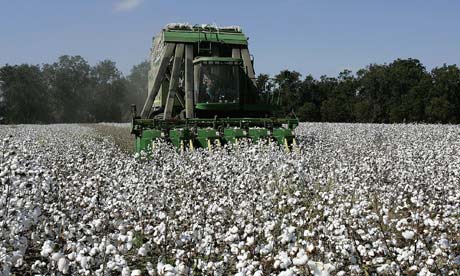By 'guest writer'
Source: ceskapozice.cz

The use of cannabis in the treatment of serious illnesses is the subject of a new Czech feature-length documentary titled “Rok Konopí” (“Year of Mari©huana”), which is premiered at Prague's Bio Oko cinema on Thursday. Legislation currently before parliament should lead to a green light for the medical use of the drug here although what form it will take is as yet unclear.
Independent producer Jan Hrnčíř decided to make the film when, soon after himself being diagnosed with a tumor in his right eye, he found inspiration at a seminar on the healing powers of hemp oil run by Rick Simpson, a Czech Republic-based Canadian marijuana advocate and electrician.
Hrnčíř signed up director Petr Slabý, who says one of the aims of the documentary is to spur a public debate on an issue that has to a certain extent been taboo.
“The film isn’t intended to be propagandistic or tendentious – it's just an effort to examine the subject, and its possibilities and limits,” Slabý told Czech Position. “We want in a way to de-demonize the drug and to show people that it isn't just something for pot heads and rastas. Its potential lies elsewhere.”
© YouTube – the official trailer, with English subtitles
Father Sun
Among the interviewees in “Year of Mari©huana” are the aforementioned Simpson; politicians including former health ministers David Rath and Tomáš Julínek; Professor Lumír Ondřej Hanuš, a pioneering Czech chemist working in the field since the late 1960s; Dušan Dvořák, a psychotherapist who has faced legal action for cultivating and distributing marijuana; “healer” Libuše “Bushka” Bryndová; and the strangely named clinical psychologist and musician Pjér la Šé'z (also one of the people behind the film), whose talk of shamen, “Mother Nature,” and “Father Sun” may grate with those of a less mystical disposition.
The documentary perhaps works best in depicting the experiences of four Czechs, two with cancer, two with multiple sclerosis, who have – at the risk of criminal prosecution – used hemp-based products to alleviate their symptoms.
One of the protagonists, Philip Polívka, was diagnosed with MS when he was in his late 20s. Despite the fact he had previously been resolutely anti-drugs, his father, himself fatally ill at the time, urged him to try cannabis as an alternative treatment.
“I use cannabis, or cannabinoids, because I feel they're helping me, somehow,” Polívka, now 40 and a father of two, told Czech Position. “In the most concrete sense it loosens up the spasticity in my legs, something I was using a different chemical for earlier on. But other chemicals have side effects that aren't always positive.” ‘In those days it would be a psychological, trippy experience. ... [Now] It’s like cold mineral water flowing through my nerves, or something.’
Polívka, a translator who grew up in Canada, was a recreational smoker of grass in his youth. “In those days it would be a psychological, trippy experience. Nowadays I don't really have that any longer, because my tolerance has got to such a level that to have an actual psychological reaction would be kind of difficult for me,” he says. “But I feel it in my body. It's like cold mineral water flowing through my nerves, or something.”
Looking to Israel
For a contrast with the situation in the Czech Republic, “Year of Mari©huana” follows Professor Hanuš to Israel, where he has in the past worked closely with Dr. Raphael Mechoulam, the scientist who first identified THC, the principal psychoactive constituent of the cannabis plant.
The Israelis have an advanced medical marijuana program, although it is strictly limited to particular patients, such as those suffering from nausea induced by chemotherapy or in the later stages of AIDS.
“But even in Israel you could see that, though people get it officially, they’re still kind of ashamed. They’re afraid that others could regard them as junkies,” says Slabý. “That’s absurd, though, because the drugs they take otherwise, that they get from pharmacies, are genuine drugs. In comparison, hemp isn’t a drug at all – it’s a regular plant and a natural substance.”
A Czech Parliament working group headed by the chairwoman of the Chamber of Deputies, Miroslava Němcová, a strong supporter of legalization, has in recent months been preparing legislation that would allow for the legal use of hemp products for medical purposes.
However, during a lower house session in March there was disagreement over some points, such as whether such products should be produced by licensed companies here or only imported from other countries.
A reworked bill will go before deputies in a second reading during a Chamber of Deputies meeting due to begin next week. The legislation is expected to get the green light, although it may only acquire its final form during that session.
Slabý believes that legal medical hemp oil (the pill form is another possibility being discussed) will become available on prescription. But he is concerned that it will prove too expensive for the very people who need it most, such as those on disability pensions. Indeed, there have been estimates that a monthly supply could cost as much as 10,000 crowns (roughly equivalent to half an average Czech take-home paycheck).‘There’s a question mark over whether it will be covered by medical insurance.’
“There’s a question mark over whether it will be covered by medical insurance,” says the director. “I know doctors say it should be carried out carefully, with precise dosages measured, and so on. But for some illnesses, like multiple sclerosis, I think patients wouldn’t actually need to go to pharmacies – they could just grow their own in their gardens.”
It should be pointed out that the Czech Republic has relatively liberal drug laws in general, with possession of set amounts of illicit drugs for personal use permitted. The limit for marijuana is 15 grams, which is equivalent to around five plants.
— Ian Willoughby is a Prague-based freelance journalist









